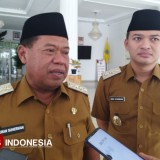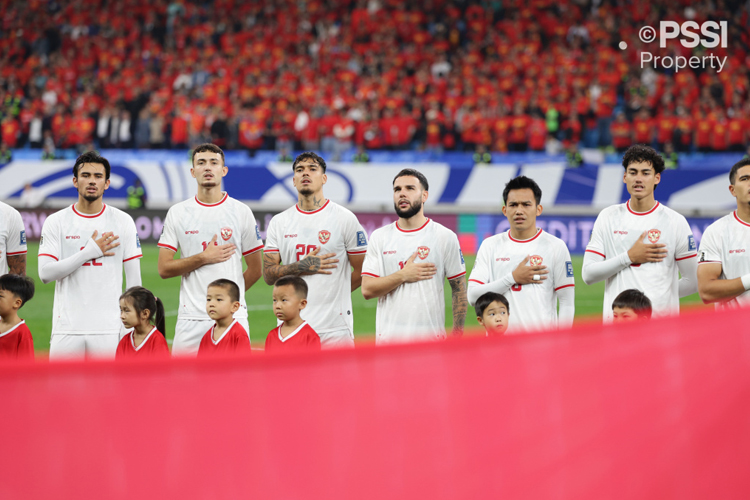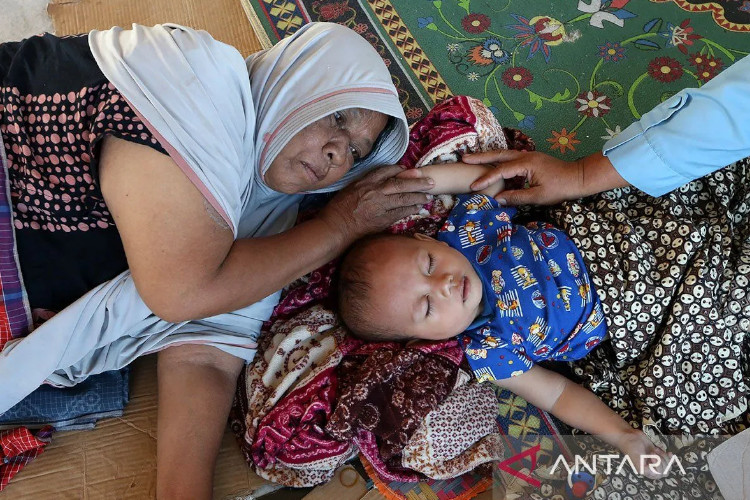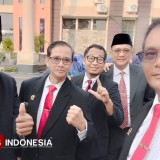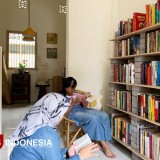TIMES JABAR, BORNEO – The Punan Batu tribe, the last jungle tribe on the island of Borneo that is still active in hunting and gathering activities in the forest, has an interesting uniqueness. Based on the results of genetic tests, the DNA of this tribe was found to be older than the ancestors of the Indonesians. This is reinforced by the use of ancient languages that are still preserved in their rituals.
Previously, the existence of hunter and gatherer tribes such as the Punan Batu Tribe was considered a myth by many researchers. However, a genetic study that took DNA samples of Dayak tribes from various provinces on the island of Borneo revealed an interesting fact.
A few years ago, researchers were surprised to find DNA that was thought to be quite ancient and had not undergone mixing or assimilation with other groups. The findings raise many questions about how a community can survive without cultural interaction or exchange for thousands of years. In addition, the study also raises questions about the lifestyle and how exclusive the tribe's living space is.
The researchers finally arrived at the Punan Batu Tribe community in Tanjung Palas District, Bulungan Regency, North Kalimantan, located in a karst area stretching from East Kalimantan to North Kalimantan.
They managed to uncover the fact that this community is still actively living ancestral lifestyles, such as hunting, gathering, moving, and living under burrows or niches.
"We are witnessing a community that is still living the lifestyle of its ancestors today. Hunting, gathering, moving around and living under burrows or niches," said Pradiptajati Kusuma, a researcher from the Mochtar Riyadi Institute.
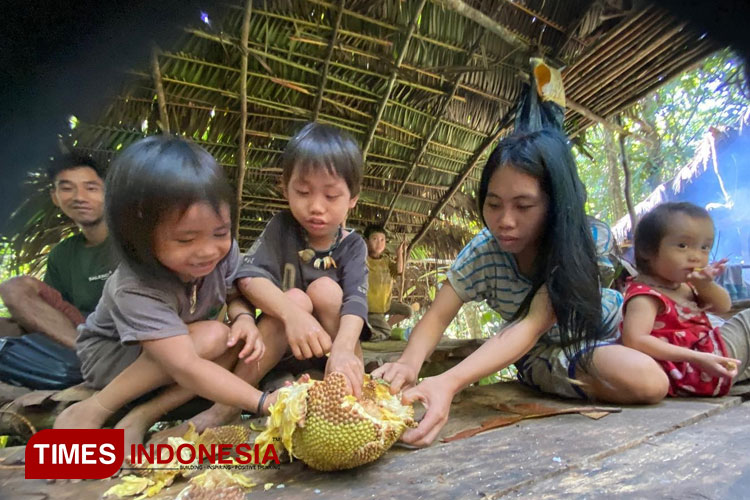 The lives of the children of the Punan Batu (Foto: Awal/TIMES Indonesia)
The lives of the children of the Punan Batu (Foto: Awal/TIMES Indonesia)
The results of genetic tests show that the Punan Batu Tribe has a history of genetic mix that is different from other communities on the island of Kalimantan. They had a genetic source before Austronesian times.
On the other hand, other tribes in Indonesia are descended from Austronesian ancestors. Genetic differences between Austronesians and Punan Batu Tribe have existed since ancient times. Thus, the researchers concluded that the Punan Batu Tribe has a different and older genetic mix history than other communities in Indonesia.
"They also use a unique language in communicating in the forest, which is called the Belahik language or twig language. They communicate by using twigs as pro-social behavior," Pradiptajati added.
The Punan Batu tribe is the last active hunter and gatherer tribe that still exists on the island of Kalimantan. They rely heavily on food sources from forests and live nomadically, moving from place to place in the forest in search of nearby food sources.
Every day, each community consisting of 1 to 5 heads of families enters the forest in search of food. They hunt animals or look for tubers as a source of carbohydrates. Edible plants are collected as the main source of food.
"Every day Hunting. (Hunting) birds, squirrels, fish, pigs, brackish, antelope. If you can't find sweet potatoes. The sweet potatoes have curry, tubong, labak, baher. It was every day to eat that day. If it runs out, look for it again tomorrow," said Lais, a teenager from the Punan Batu tribe.
Currently, only about 100 people or 36 heads of families are left with this kind of lifestyle. They spread in the forests around Mount Benau and the Sajau River. Other Punan Batu tribes have migrated, abandoning the lifestyle of hunting and gathering.
To identify the last hunter-gatherer tribe on Borneo Island, the researchers named this community as the Punan Batu Benau Sajau Tribe. It is an attempt to understand and pay attention to their survival and culture in an increasingly changing context.
Because they lived nomadically, the Punan Batu tribe built small huts in the forest, called lapo. Each family builds its own cottage with a pedestal of tree trunks and a roof of foliage, with sizes according to the number of family members.
Although it may sound simple, they are very comfortable living there. When the local government tried to build housing for them, the business was abandoned because it was far from forests and food sources. For the Punan Batu Tribe, living in the forest is a real paradise.
"In terms of their enormous physical activity, I observed that they moved from 8 a.m. after a potluck breakfast, and returned in the afternoon at 4 or 5 p.m.," said Pradipta, a researcher who has studied the tribe since 2018.
 Prepare to hunt. (Foto: Awal/TIMES Indonesia)
Prepare to hunt. (Foto: Awal/TIMES Indonesia)
The Benau Sajau area is still a tropical jungle and also a karst landscape with many burrows or caves. In certain seasons, some of them live in caves, for example during the harvest season of swallow's nest. Although they still depend on the forest, they also run a barter system to get basic necessities.
There are three main locations where the Punan Batu Tribe lived: on the banks of rivers, in the middle of wilderness, and in karst burrows. They move every two weeks, depending on food availability and convenience. For them, the forest gives everything easily, making their lives simpler and more comfortable.
"That is our hereditary happiness. In the forest, we enjoy the cool air and we can find our own food without excessive effort. Everything becomes easier in the forest," said Punan Batu traditional chief, Asut.
The Punan Batu Benau Sajau tribe is a picture of the simple life of our ancestors. Their social institutions were simple because they still depended on hunting and gathering, with no food storage patterns or the art of having to enter the forest every day to find food.
At certain times of the night, they perform a ritual called Menira, in which they chant verses to their Lord called Latala. The purpose of Menira was to appeal for abundant hunting as well as other wishes.
Another uniqueness of the Punan Batu Benau Sajau community is the language they speak in Menira, which is an ancient language and different from the language used daily.
"Punan language is colloquially included in the Austronesian language family such as Indonesian, Javanese, Malay, and languages spoken in central and western Indonesia," Pradiptajati said.
Menira is done consciously, not in a trance. The researchers found that the verses used in Menira can be reconstructed per word, thus actually forming sentences.
This ancient language is different from Austronesian languages which are generally used as mother tongues by most Indonesians, or Austroasiatic languages spoken in mainland Southeast Asia. The language spoken in Menira is very old, along with its age which is as old as the DNA of the tribe.
"When we recorded the vocabulary in Menira, it was neither related to Austronesian languages nor Austroasiatic languages. Austroasiatic languages are spoken in mainland Southeast Asian regions, such as Myanmar, Laos, and Cambodia. So this language is very old," explained Pradiptajati.
Apart from being a ritual, Menira is also used as a lullaby for children. The verses in Menira give a moral message to children to grow and survive in the forest. This custom also kept the Latala language from continuing to be passed down and not becoming extinct.
One of the uniqueness of the Punan Batu Tribe is their pro-social life, even though they live in the middle of the wilderness of the Kalimantan Tropical Rainforest and karst areas. They are able to communicate by using symbols.
Each family has their own distinctive symbols. For example, the Samsul family, one of the families in the Punan Batu Tribe, uses symbols to signify the existence of their family. These symbols can contain a variety of messages, such as information about existence, situations, and units of time and numbers.
Samsul uses symbols to indicate the presence of his community in the middle of the forest, and also gives directions for its location. The symbols created can also contain messages about community conditions, such as hunger, illness, or departure. Thus, other Punan Batu communities who pass through the forest can read the message.
"They also have a unique language related to the language of communication in the forest, which is the term belahik or twig language. They communicate by using these twigs as pro-social behavior," Pradiptajati said.
Yayasan Konservasi Alam Nusantara (YKAN) together with researchers who have researched the Punan Batu Benau Sajau Tribe are trying to get official recognition for the existence of this tribe. With this recognition, their existence can be recognized as part of the indigenous community.
Previously, the existence of the last jungle tribe on the island of Borneo was not known with certainty and even considered only as a myth. However, with the evidence obtained through scientific research, the protection of the Punan Batu community became very important in the effort to save their culture.
"They need living space, and this living space of theirs is in this forest of Mount Benau. The hope is that first of all there will be certainty that they really live in the territory of this customary law community, which covers an area of about 18 thousand hectares," said Taufiq Hidayat, YKAN's Community Engagement Manager.
The Bulungan Regency Government has issued a Decree on the Recognition of Customary Law Peoples (MHA). This decree legally recognizes the existence of the last hunter and gatherer community on Borneo Island.
"This initial step is the result of the preliminary that we have done with the establishment of customary law communities. Furthermore, the next step is to provide protection for them, both in the social field and protection related to territorial areas in the region," said Bulungan Regent Syarwani. (*)
| Pewarta | : Ahmad Syahir |
| Editor | : Khodijah Siti |






